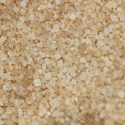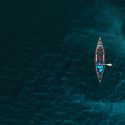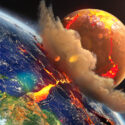These beautiful waters look just fine. As you take a dive, a strange loud rumble comes from beneath the surface leaving you paralyzed in fear. You look around only to find a huge white cloud filled with deadly gas is coming for you. You have found yourself in one of the world’s exploding lakes. And you have seconds to make a decision.
Lake Nyos and Lake Monoun in Cameroon, as well as Lake Kivu located between Rwanda and the Republic of the Congo, are amongst the deadliest lakes on Earth. They’re near volcanos and connected to underground magma that can build up carbon dioxide at the bottom of a lake. When there’s increasing pressure on the water, the carbon dioxide can escape and create a thick cloud that displaces breathable air. This is called a limnic eruption and has the potential to kill thousands of people in minutes. What are the warning signs before a limnic eruption? Why should you get to higher ground? How could a bike save your life?
Step 1. Beware of Earthquakes
These deadly waters can be tricky. They might look harmless since the magma is about 10 km (6 mi) underwater. To trigger an explosion, the gas has to reach pressure levels that can no longer be held in. This can be caused by something like an earthquake, or landslide. If you’re in the area and experienced an earthquake or heavy rains recently, stay away from those lakes.
Step 2. Sharpen Your Nose
Just like that rumble made you feel that something bad was about to happen, a nasty stench can be an indicator of a catastrophe in the making. And I’m talking about a particularly putrid scent, similar to a rotten egg. On the morning of August 21, 1986, about 1,700 people and 3,000 animals were found dead near Lake Nyos. The night before, gas underneath the lake reached the surface and about 1.6 million tons of carbon dioxide escaped. The resulting cloud of deadly gas rose 100 m (328 ft) in the air. Survivors of the disaster noticed a strange smell. It was likely from the sulfuric gasses that were escaping.
Step 3. Get to Higher Ground
Two years before the terrible events at Lake Nyos, a similar explosion took place at Lake Monoun on August 15, 1984. A huge cloud of carbon dioxide rose over the lake. Since this gas is heavier than air, it sank and covered a nearby village, killing 37 people. In a disaster like this, getting to higher ground can decrease your exposure to any toxic substances and save your life.
Step 4. Hold Your Breath
When you get caught in a killer cloud, you need to get out of there as fast as possible. As you’re doing this, try to hold your breath as long as you can. Every breath would allow carbon dioxide to enter your lungs and bloodstream. An excess amount of carbon dioxide in your body is called hypercapnia, and it can kill you. Finding a car and leaving the area would be ideal. If you can’t, grab a bike and start pedaling. Whatever you do, don’t run. That extra effort can produce even more carbon dioxide in your bloodstream.
Step 5. Mask Up
While areas around Lake Nyos and Lake Monuon are now closed off, Lake Kivu still has about two million people living around it. It’s a situation that could be a catastrophe in the making. Lake Kivu has about 1,000 times more concentration of deadly gases than Lake Nyos. If you live anywhere near there, you’d need to be prepared with a mask and supply of oxygen. This will allow for access to filtered air while you put your plan in place to get to safety. That was a tough one, but you made it.
Sources
- The Deadly Cloud At Lake Nyos. Bressan, D. (2019). Forbes.
- How did Lake Nyos suddenly kill 1,700 people?. Nasr, S. (2022). How Stuff Works.
- ‘Killer Lake’ in Africa Looks Like Paradise, But It’s Hiding a Deadly Secret. Douet, M. (2022) Science Alert.
- How to Survive a Limnic Eruption. Cummins, J. (2017) The Art of Preparedness.
- Using Science to Solve Problems: The Killer Lakes of Cameroon. NA (2016) Regents of the University of Michigan

















